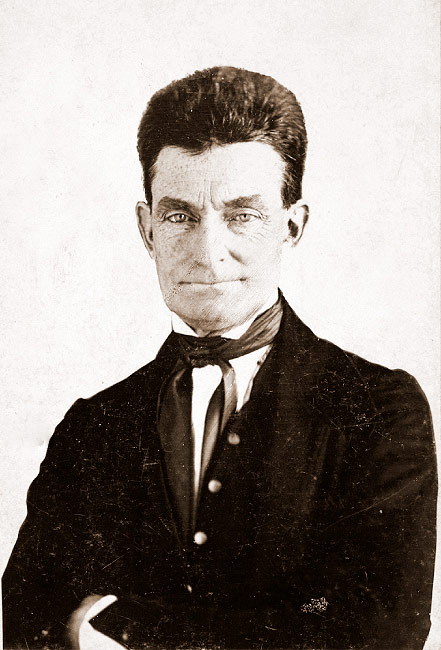The Pottawatomie Creek Massacre
Richard Cavendish describes the massacre of the 'slave hounds' at the settlement of Pottawatomie Creek on May 24th, 1856.

The anti-slavery fanatic whose body lies a-mouldering in the grave while his soul goes marching on was driven by religious fervour as much as anything recognizable as human sympathy. John Brown was deeply involved in the civil war which by 1856 was raging in what the newspapers of the time called ‘Bleeding Kansas’.
When Kansas had been organized as a new territory by Congress in 1854, the decision as to whether slavery should be permitted there had been left to the free, democratic choice of the settlers. Slaveowners from neighbouring Missouri had promptly begun immigrating into Kansas, but were outnumbered by incoming farmers from Kentucky, Tennessee and elsewhere, who had no slaves and no use for them. The opposing sides held rival elections and set up two opposing terrritory governments, and tensions mounted to the point where in May 1856 a mob of pro-slavers, well supplied with guns and jugs of whiskey, sacked the anti-slavery town of Lawrence. Revenge was swiftly exacted by John Brown.
Brown, who had grown up in Ohio in a devoutly religious family that claimed descent from the Pilgrim Fathers, believed that the Second Coming of Christ was only being held back by the evil institution of slavery in America. He married twice and fathered twenty children, while taking up a variety of unsuccessful business ventures. Five of his grown-up sons presently moved to the new Kansas territory and sent to him asking for weapons to defend themselves against the ‘border ruffians’ from Missouri. Their father, who was now in his middle fifties, went to their aid in September 1855 with a wagon-load of swords, guns and gunpowder. Settling at a small town, called Osawatomie, he was appointed head of an anti-slavery militia company. The following May came the pro-slavers’ attack on Lawrence.
Brown was outraged. He told his company that he intended to carry out ‘a radical retaliatory measure’ which would involve ‘some killing’. In Washington meanwhile, Senator Charles Sumner of Massachussetts, a determined and vitriolic abolitionist, demanded the immediate admission of Kansas to the Union as a non-slave state. Two days later Congressman Preston Brooks of South Carolina walked up to Sumner in the Senate, beat him savagely about the head with a cane and left him bleeding and unconscious. Supporters in the South sent Brooks replacement canes.
News of the attack on Sumner reached Kansas and Brown ‘went crazy’, according to witnesses. He decided on a ‘secret mission’ against the ‘slave hounds’ at the small settlement of Pottawatomie Creek, near Osawatomie. With four of his sons and two or three others, he crept into the settlement at dead of night, hauled five sleeping settlers from their cabins and hacked them to pieces with cutlasses. A twenty-year-old whose arms had been cut off was finished by Brown with a rifle. One of the settlers’ women remembered Brown as a tall, narrow-faced elderly man in soiled clothes, a black cravat and a straw hat. The murderers washed the blood off their cutlasses in the stream and rode away. They were never prosecuted for the crime. The ‘massacre’ brought out hundreds of armed men on both sides. Some of the Brown homesteads were destroyed by pro-slavers and at the end of August Osawatomie was burned by pro-slavery men in revenge for the killings. Guerrilla warfare was raging between the two sides and by the end of the year some 200 people had been killed.
Brown was planning to stir up a slave insurrection. Slaves would rally to him and he would supply them with weapons and lead them to a retreat in the southern Appalachian Mountains. All the other slaves in the South would eventually desert their masters and join him there, and the institution of slavery would collapse. In pursuit of this scheme he raided the US Armory at Harper’s Ferry in Virginia in 1859. Defeated and captured, he was tried for treason, conspiracy and murder, and hanged. Abolitionists in the North considered him a saint and martyr.




